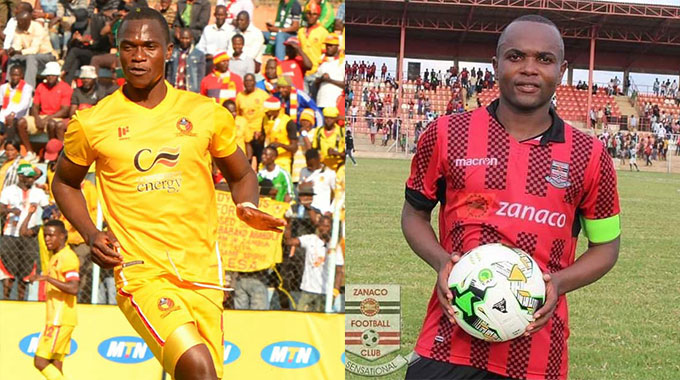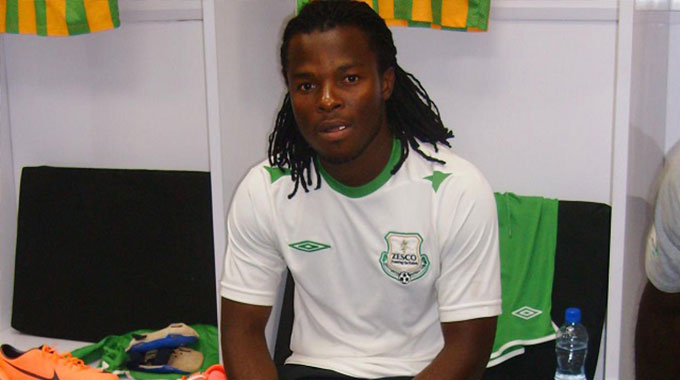
The Sunday News

Mehluli Sibanda, Senior Sports Reporter
IN the mid 1990s up to start of new millennium, the Zimbabwean Premier Soccer League was awash with talent from Zambia.
Dabwitsho Nkhoma, Charles Chilufya (late), Ian Bakala, Webster Chikabala, Chewe Mulenga, Sandras Kumwenda, Laughter Chilembe, Anderson Phiri, Kelvin Kaindu, Ferdinand Mwachindalo and Clive Mwale are some of the Zambians who have captivated local football fans over the years.
Fast forward to 2020, Zimbabwean players are moving in their numbers to Zambia. Thabani Kamusoko, Jimmy Dzingai, Zimiseleni Moyo, Winston Mhango, Tafadzwa Rusike, Ocean Mushure, Dennis Dauda, Donald Teguru, Joel Ngodzo and Elisha Muroiwa are some of the notable names who are now based in Zimbabwe’s northern neighbours. Moyo, Mhango, Rusike, Dzingai, Kamusoko, Dauda, Muroiwa as well as Mushure have been in Zambia for a number of years while Teguru and Soccer Star of the Year Ngodzo made the switch at the start of this year. The Highlanders product and former FC Platinum and Caps United midfielder (Ngodzo) signed for Buildcon at the end of Deceember.
Dynamos striker, Evans Katema is also in Zambia at the moment, with indications being that he is on the verge of joining one of that country’s football giants Zanaco. However, player intermediary, George Deda is of the view that the Zambian league and the Zimbabwean one are still at par.
“Nothing has really changed, the level of football remains at par, if a Zambian team is playing a Zimbabwean team you can cannot predict the result,’’ he said.
Deda, who takes credit for bringing Kaindu to Highlanders and Kumwenda to Dynamos said most Zimbabwean players now want to switch to Zambia because of salaries paid in United States dollars in the copper rich nation.
“Every player now wishes to play in Zambia, it’s not about the level of the game in Zambia that has improved, the only thing that has changed is the economic landscape that has seen the Kwacha performing well, the Kwacha being strong and the culmination of the separation of the RTGS as well the US Dollar accounts by the Reserve Bank of Zimbabwe,’’ Deda said.

Jimmy Dzingai and Tafadzwa Rusike
According to Deda, who has been facilitating player movement from Zimbabwe to Zambia for two years, the highest paying clubs in Zimbabwe are rewarding players with an equivalent of US$150, which the bulk of the clubs locally cannot afford.
“It’s a question of the money factor, the best paying club in Zimbabwe now is paying about US$150, if you put that on the black market it will translate to about to $2000 t0 $3000 which 90 percent of the Zimbabwean clubs cannot afford, you cannot go to Bulawayo City or Bulawayo Chiefs and ask them to pay a $3 000 salary for a bill of say 30 players,’’ he said.
Deda indicated that even the poorest of clubs in countries such as Swaziland are paying US$600 a month, which is attractive to Zimbabwean players.
“Even the poorest club in Swaziland right now and the most average club in Botswana, they are paying about US$600 after all deductions and inclusive of accommodation so a Zimbabwean player will say to himself why can’t I can’t to Zambia where I am going to get US$900 exclusive of bonuses plus the same team would be offering accommodation. Let it be known that three years ago that was the kind of money that Zimbabwean clubs were paying.”

Zimiseleni Moyo
One of the game changers in Zambia is Buildcon FC, a club owned by Zambian business mogul, Moses Mubanga. Deda said Buildcon salaries range from US$2 000 to US$3 000, something that teams in Zimbabwe cannot compete with.
“Buildcon, owned by one of the richest tycoons in Zambia, their salaries range from US$2 000 to US$3 000, surely Zimbabwean clubs cannot compete even if they want to compete, our economy cannot allow that,’’ Deda said.
Anderson Phiri, a former Railstars captain said he came to Zimbabwe in 1997 because the Zimbabwean economy was attractive at that time.
“The economy was so attractive than Zambia. The Zimbabwean dollar was powerful by then,’’ Phiri said.
Kaindu, who played for Highlanders for one season in 1997 said his move to Zimbabwe was because the country was a pathway to European leagues and South African league while the Zimbabwean economy was flourishing at that time.
“I came to Zimbabwe in 1997 coming from the Cosafa Under-20, Zimbabwe had connection to European or South African leagues and the economy was very good by that time,’’ Kaindu said.
Zambia has become an option for local players, who in recent years were looking at mostly the South African and Botswana leagues for greener pastures, apart from moves to Europe.
@Mdawini_29



